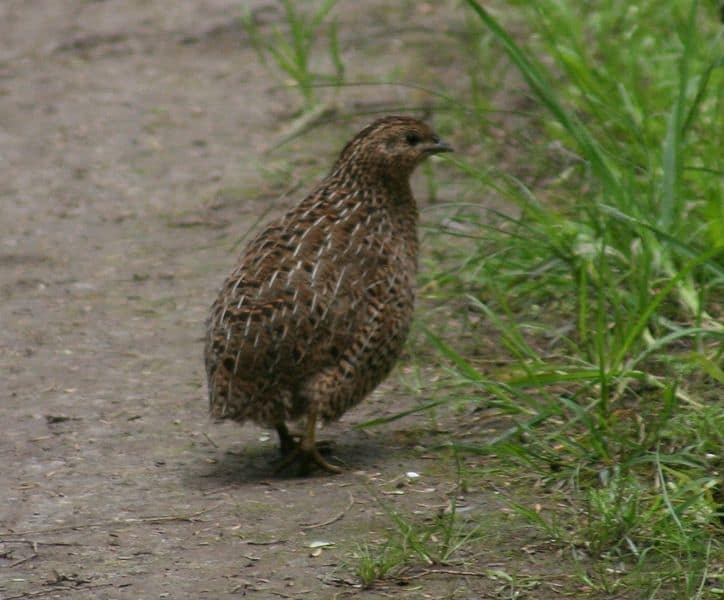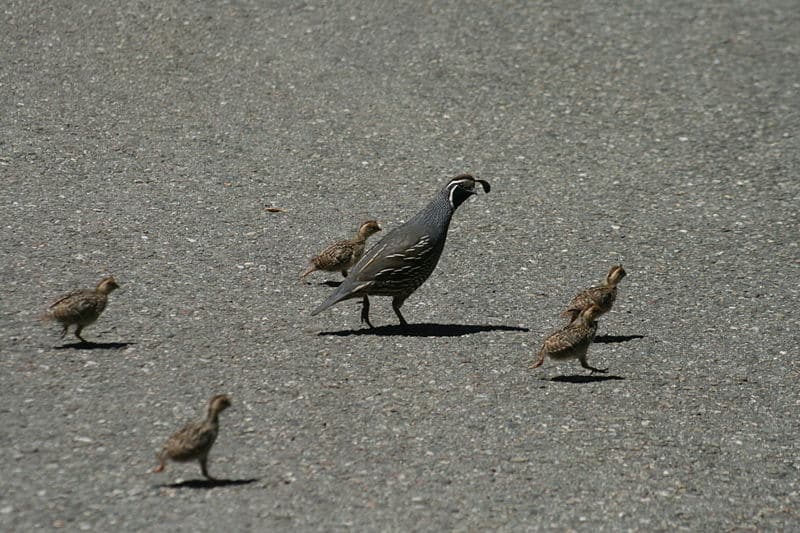Today, we discuss quail vs. grouse. Even though both species are in the Phasianidae family, there are a lot of differences between these two birds! Read on to learn more!
Quail vs. Grouse: A Comparison
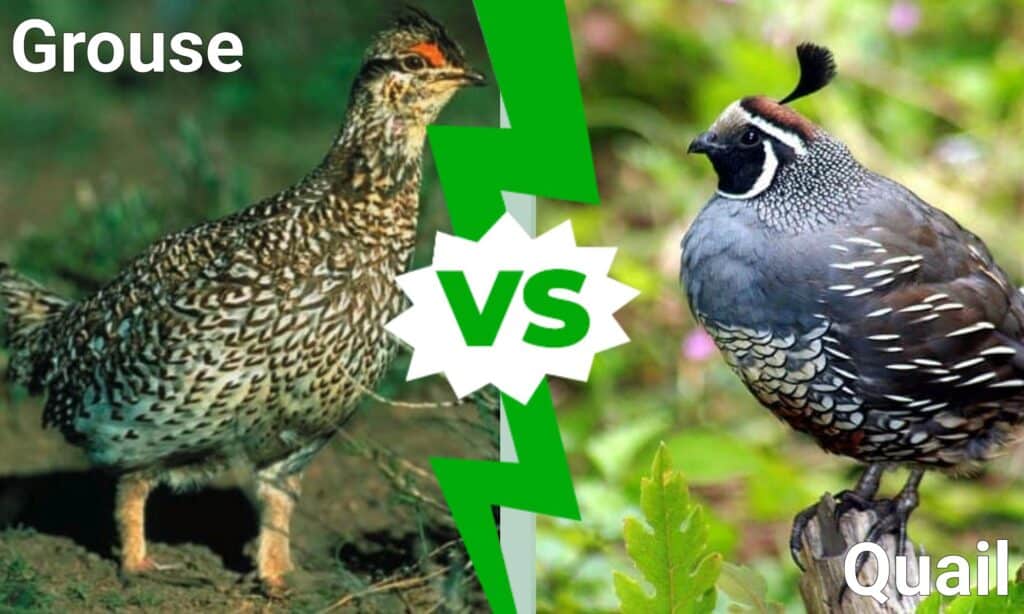
| Quail | Grouse | |
|---|---|---|
| Size | 6-7 inches, weighing up to 1 lb. | 12-37 inches, 0.6-14 lbs. |
| Colors | Brown, Tan, Blue, Red/Orange | Grayish, Reddish Brown, Black, Emerald, White |
| Variations | 130 species of quail | 18 distinct species |
| Diet | Omnivore: Fruits, nuts, insects, mollusks | Omnivores: Diet varies depending on the season |
| Lifespan | 1-6 years | Up to 11 years |
| Habitats | Farmlands, Grasslands | Forests, Grasslands, Tundras |
| Conservation Status | Least Concern | Some species are Near Threatened, though most are of Least Concern |
Key Differences Between Quail vs. Grouse
The key differences between quail and grouse are their habitat, size, lifespan, appearance, number of species, and conservation status. One of the major differences between these birds would be their appearance. Although their colorings tend to be similar, their size and feathers are not. Grouse tends to be much larger than even a heavy-bodied quail, resembling large pigeons, chickens, and turkeys. A common grouse, known as the ruffed grouse, is slightly larger than pigeons, while a common quail is similar to a crow.
Colors
While both quail and grouse can be a variety of grays and browns, it depends on the species. Quails are typically brown and tan, with intricate patterns on their feathers. It is quite common to see a variety of quail as a light tan with brown and gray, although some quail species can be blue and red. However, few have these unique colors. The blue quail is the most uniquely colored quail, with brown wings, a white ringneck, and a red belly.
Grouse are also often a mix between browns and grays. However, there are several distinct species of grouse that have both uniquely colored bodies and feathers. For instance, a Norwegian white grouse looks like a stark white pigeon and can easily camouflage in the snow, while a western capercaillie looks like a black turkey with an emerald breast and red arched eye.
Variations
Both the quail and grouse have a lot of different varieties of their species; however, one does have more than the other. The quail, for instance, has been segregated into two genera, the New World and Old World. While some species of quail in the Old-World genus are extinct, with both genera combined, there are still 130 species of quail in the world! They can range anywhere from North America, Europe, Asia, and Africa, a truly diverse species!
Grouse have up to 18 distinct species, and while they do not share as much variety as quail do, all species are unique in their own way! While you are more likely to see a ruffed grouse in North America, you can also find them in Europe and Asia. You can even find these unique birds in the tundra!
Diet
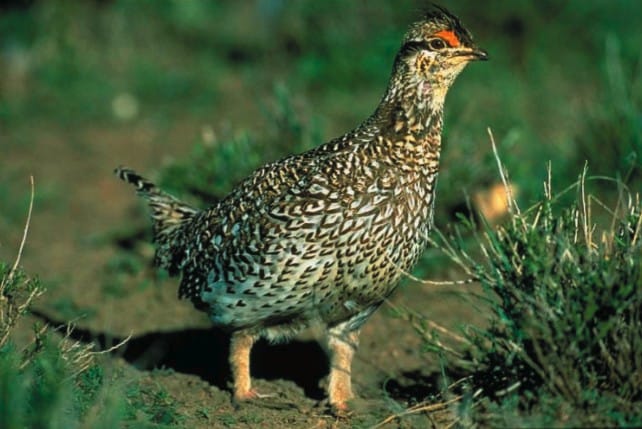
The diet of the grouse changes with the season more often than the quail.
©Richard Hoffman – Public Domain
While quails are omnivores, they are more likely to eat grains, seeds, berries, and other forms of vegetation. Although, they can eat insects and are likely to eat them more when they are young or during the breeding season. If there aren’t enough grains or seeds nearby, or if the season makes it to where this is not available for them, they will also eat leafy greens and vegetables.
Grouse are also omnivores and feed on vegetation as well. However, they tend to eat more twigs, bugs, and flowers like catkins and leaves. They have big crops and gizzards to help digest their food, and they also tend to eat grit to break up the food. Although grouse eat a lot of vegetation, this also depends on the season and what is available to them. In other words, their diet changes along with the seasons more so than a quail’s diet.
Lifespan
As for lifespan and longevity, quail can live anywhere from one to six years. The average lifespan of quail in the wild is typically two to three years.
Grouse can live up to 11 years in the wild. However, humans and other wild animals often hunt these birds. In fact, the Ruffed grouse is known to often suffer a violent death since it is hunted by carnivores, often only living up to two to three years in the wild at most.
Habitat
Quails and their habitats often vary depending on migration and where they originate from. Usually, you can find quails in grasslands, prairies, farms, and even forests. Though, it is possible to find quails near mountainous regions. There is also an exceptionally large population of quail originating from Africa and several other species migrate to Asia.
Grouse usually live in forests. However other species of grouse can live in grasslands and prairies, as well as the arctic tundra. For instance, in colder areas, you are more likely to find the snow grouse or the Norwegian white grouse, while you can find the sage grouse, greater prairie chicken, and the lesser prairie chicken in both grasslands and prairies.
Conservation Status
While most quail species are listed as Least Concern on the Endangered Species list, there are some in both North America and Europe that are threatened due to habitat loss and hunting. Even some species in the Old-World genus are extinct.
Grouse are also of Least Concern, but several species are also threatened due to hunting as well. Fortunately, it is illegal to hunt grouse for sport in certain areas where they are threatened, banning humans from threatening this species any further.
Wrapping Up
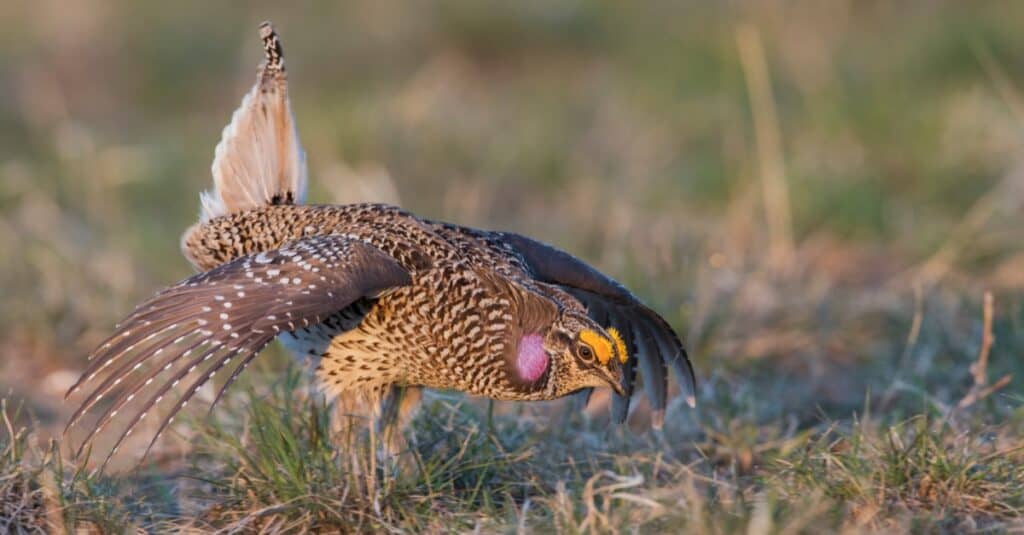
Grouse are fascinating birds.
©Danita Delimont/Shutterstock.com
While both quail and grouse share similarities, they are also uniquely different species. While grouse can be larger than quail, quail outnumbers grouse globally due to the immense variety of their species across the world. However, both species are incredibly amazing and equally fascinating to learn about! Now that you’re an expert on the topic of quail vs. grouse, see if you can spot one of the many varieties next time you’re in nature!
The photo featured at the top of this post is © Richard Hoffman - Public Domain
Thank you for reading! Have some feedback for us? Contact the AZ Animals editorial team.




